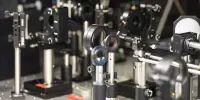According to Stephanie Dotchin, MD, FRCSC, DipABO, a pediatric ophthalmologist and clinical associate professor at the University of Calgary in Alberta, Canada, the economic toll associated with myopia necessitates actions to reduce the prevalence of nearsightedness and investigation of potential remedies. Dotchin presented at the University of Toronto Department of Ophthalmology’s annual pediatric ophthalmology conference, the 33rd annual Jack Crawford Day.
Dotchin stated that 90% of youths in East Asia may be myopic; that 2.5 billion people worldwide had myopia by 2020; and that the costs connected with myopia were $202 billion internationally. Using data published in 1995, the researchers conducted a comprehensive review and meta-analysis of the prevalence of myopia and high myopia and estimated temporal trends from 2000 to 2050.1 According to Dotchin, they project that half of the world’s population will be myopic by 2050.
Myopia rates are concerning in countries such as China and Singapore, particularly in Singapore, according to Dotchin. “In Singapore, it has been determined that myopia is such a significant public health issue that they’ve initiated a public health campaign to encourage children to get outside,” she stated.

Myopia diagnoses are also on the rise in the United States, according to Dotchin. “Over the last 30 years, the rate of myopia in the United States has increased from 25% to 42%,” she stated.
Dotchin predicted that the rising prevalence of myopia would have long-term consequences. “We’ll see more macular degeneration or myopic macular degeneration, cataracts, and glaucoma, and that will undoubtedly cost our healthcare systems more,” Dotchin predicted.
Dopamine and light exposure2 have been linked to the pathophysiology of myopia; when exposed to light, dopamine is released from the retina, and retinal dopamine levels are negatively correlated with axial length, according to Dotchin.
Although there are general guidelines that focus on limiting screen time, such as limiting television viewing and time spent on computers or handheld devices, one of the concerns that gets lost, according to Dotchin, is the distance an individual is positioned from a device or a book.
The Generation R study, which included 3422 children, discovered that the degree of outdoor exposure was a major predictor of myopia, but that reading distance had a relative effect.3
Dotchin underlined that the same research revealed that at least 7 hours of outdoor exposure per week was required to compensate for low-intensity close work, and more than 14 hours per week was required to compensate for moderate- to high-intensity near work.
Managing myopia: Atropine has been demonstrated to be an effective treatment for myopia patients; one theory is that it has a direct effect on scleral fibroblasts by reducing glycosaminoglycan synthesis, according to Dotchin. “It has been used off-label for myopia treatment since the 1960s, and the exact mechanism of action in myopia control is unknown,” she said.
Dotchin emphasized the ATOM 1 and ATOM 2 experiments, which investigated the effect of atropine on myopia. ATOM 1 data revealed that larger concentrations of atropine resulted in stronger rebounds. ATOM 2 data, which looked at three different doses, revealed that at the end of five years, people who used the lowest amount of 0.01% had the smallest change. She also discussed the most recent LAMP research and their findings.
Orthokeratology, which produces central flattening of the cornea, is another treatment option. “Orthokeratology has become another significant area of interest for the treatment of myopia,” Dotchin explained. According to one study, orthokeratology resulted in a 45% reduction in myopic development in school-aged children after 2 years, however, the study lacked a washout phase. Infectious keratitis was detected in 13.9 per 10,000 wearers, which was caused by Acanthamoeba and Pseudomonas.4 “To me, the potential risks (of orthokeratology) don’t outweigh the potential benefits,” Dotchin added.
Spectacles and contact lenses are another therapeutic options, although they have not been demonstrated to be beneficial in preventing or reducing the advancement of myopia. An alternative to spending more time outside is to utilize low-level red-light treatment as a method of myopia control on a regular basis. Dotchin noted that researchers discovered this strategy to be a good alternative treatment for myopia control in children.
“Some alternative therapies are looking into light manipulation in order to mimic the effect of bright outdoor light exposure,” she said.
















